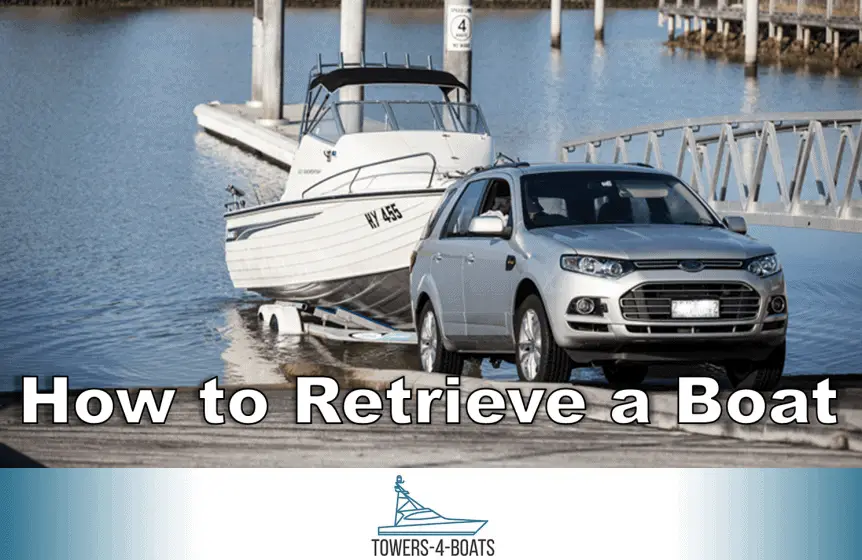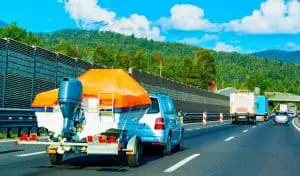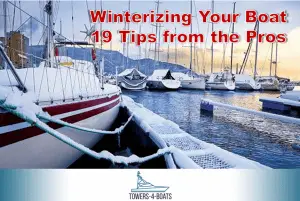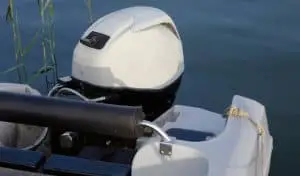After a long, fun-filled day on the water, you are finally ready to trailer your boat and head back home. Like launching your boat, this step is something that shouldn’t be too challenging to handle, but knowing what the process is beforehand can be incredibly beneficial. Your first time might be a little daunting, but the more you launch and retrieve your boat, the sooner you will become more comfortable and be able to accomplish this task like a pro.
Retrieving Your Boat: Step-by-Step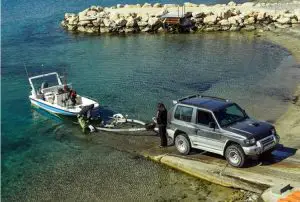
When it comes to retrieving your boat, this is accomplished in the opposite way in which you launched it. Below are the steps that will help you get your vessel out of the water and ready to take home.
Step 1: Head Back to the Loading Ramp
The first thing you’ll want to do is pull up to the loading ramp. If you have another person with you who will be driving the vehicle and trailer, let them hop out and back the vehicle with trailer down the ramp. You can stay in the boat and idle in the area until the trailer is in the water.
Step 2: Wait for the Trailer to Get Into the Water
The driver will then need to back the trailer far enough into the water so that you can pull the boat on. If you are still in the boat, you can signal to the driver to let them know that they are far enough in. In general, this will be the same depth as when you launched the boat. The back tires of your vehicle should be wet, and the trailer should be partially submerged.
The driver should then put the vehicle in park and engage the parking brake. They can leave it running, as they’ll need to drive away as soon as the boat is on the trailer.
Step 3: Angle the Boat for the Trailer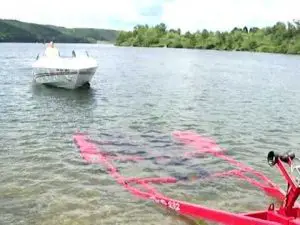
With your engine on low, you will then angle your boat toward the trailer and slowly drive onto it. If the water is shallow and you are unable to use your engine, you may need to take out your oars and paddle onto the trailer.
In many cases, the loading area is a no wake zone, so you can’t power your engine to full throttle. This is also incredibly dangerous and could have you overshoot your trailer and cause damage to the boat or your rig. Take it slow. If it takes more than one attempt to get onto the trailer, that’s okay. You want to keep you and your equipment safe.
Step 4: Connect the Winch
Once your boat is on the trailer, either you or the driver will need to get onto the trailer tongue and connect the winch. You will then crank this until your boat is fully on the trailer and the bow is against the winch post. Once you have accomplished that, you can attach the safety chain.
Step 5: Pull Out of the Water
At this point, you should be ready to pull the boat and trailer out of the water. The driver needs to drive slowly. If necessary, have them stop so you can raise the outboard or sterndrive. They can then go to a parking area out of the way so you can finish your preparations for hitting the road.
This video show how to retrieve your boat at the ramp.
Retrieving a Boat Alone
If you have gone boating or fishing by yourself, you’ll still need to get the boat out of the water. Again, this may seem like a daunting task, but it is something you will be able to accomplish. Below are the steps for this process.
Step 1: Secure Your Boat
Since you don’t have another person to help with the loading process, when you get back to the loading ramp, you will have to secure your boat so that it doesn’t drift away. If there is a dock, you can tie bow and stern lines to it to keep your boat in place, attaching the line to your bow cleat.
If there isn’t a dock at the boat ramp, then you’ll need to pull your boat to the side and tie it to a secure object. This could be a rock or a tree—whatever is on the beach for you to use. You’ll also want to pull it onto the sand as far as possible to keep it in place.
Step 2: Get Your Vehicle
After you have secured your boat, you can then get your vehicle and trailer. Back down the ramp until the trailer is submerged. Again, the back tires of your vehicle should be wet. Put the vehicle in park, engage the parking brake, and jump out.
Step 3: Load Your Boat
Head back to your boat and unhook it from the dock or other structure it was secured to. You will need to move away from the shore and the loading ramp to line the boat up with the trailer. If you can use your engine, then slowly proceed toward the trailer and center the boat. Once it is on, you can then jump out and secure the boat with the winch line and safety chain.
Alternative Loading Method
In some cases, depending on the loading ramp and how deep the water is—and if you don’t mind getting wet—you may be able to walk the boat onto the trailer. This involves grabbing the tow line and manually pushing the boat away from the dock or the shore and then pulling it onto the trailer. When it is close enough for the winch line to reach it, you can connect the line and have the winch do the rest of the work.
This process will work best in smooth, calm water. If you are trying to retrieve your boat on an incredibly windy day or in waters with a strong tide, you may lose your grip and have your vessel float away. If you find yourself in this type of situation, rely on your engine to get your boat onto the trailer.
Preparing Your Boat and Trailer for the Road
Once you have pulled the vehicle and trailer out of the water and found a place to park, you can then get it ready for the road. This is where you will pull the plug and drain any livewells you may have. It’s important to drain the water at the same place you were just boating, as this will reduce the chances of transporting invasive species from one area to another.
While the boat is draining, you can attach your transom tie-downs and any other safety lines you put in place. If you raised any antennas while boating, make sure to put these down as well. This is also when you will transfer your equipment, including coolers, chairs, fishing poles, tackle boxes, safety equipment and whatever else from the boat into your vehicle. Before heading down the road, make sure your trailer lights are plugged in.
Boat Ramp Etiquette
The boat ramp is an area that is used by numerous people so that they can enjoy the day in their boat. Getting your boat in and out of the water as quickly as possible will give everyone the opportunity to use this amenity. In addition, there are some other boat ramp etiquette regulations you need to be aware of.
Know the Rules of the Ramp
Knowing the rules of the ramp will ensure that you aren’t causing damage to the ramp or to your vessel and vehicle. These may include the size of boat that can be launched for the area or maybe you have to pay a fee to use the ramp. The rules may be posted in the area or you may have to access them online. No matter where the rules are located, you will be responsible for knowing what they are before getting into the water. If you have any questions, don’t be afraid to ask.
Never Load or Unload Your Boat on the Ramp
Loading or unloading your equipment while your boat is on the ramp takes time, and you will be in the way of other boaters. Always have your boat out of the water and pulled over to the side to load and unload the equipment you’ll need to have a thrilling day on the water.
Keep Your Boat to the Side
During the process of launching and retrieving your boat, you will have to take care of your vehicle. Whether you are alone or with others, while this step is occurring, make sure your boat is pulled to the side and out of the way of others. Once everyone is on the boat, then pull away slowly and keep an eye on others to reduce damage to your boat and the other vessels around you.
Get Your Boat Out Today
The best part of having a boat is being able to get out and spend time on the water. Knowing how to launch and retrieve your boat is part of that process. While this may seem stressful and challenging, with some information and practice, it won’t take long and you’ll be doing these steps like a pro.

